1/ Description of a snowboard binding
First, find out about the different parts of a snowboard binding.

Bindings are a major part of the board and guarantee efficient slide and control of the snowboard, while providing support and comfort.
First, find out about the different parts of a snowboard binding.

1. Highback
2. Heelcup
3. Buckles
4. Sliders
The hooks fit into the sliders, enabling precise adjustment.

1. Foam cushioning pads (Highback)
2.Ankle straps
3. Toes straps
4. Gas Pedal for better angle control
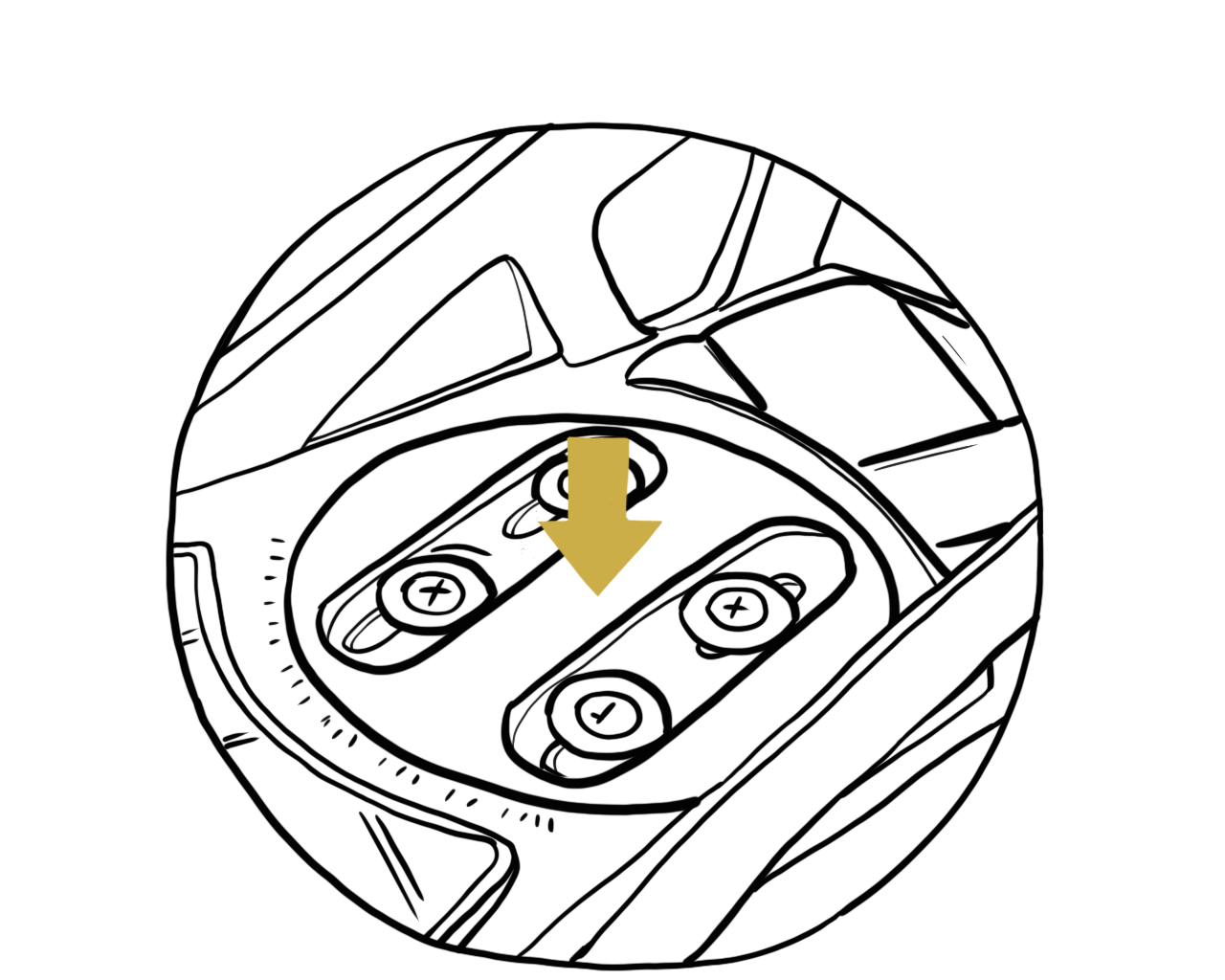
3 - Disk and screw
A central disk is attached to the board binding with a screw and enables stance and the angle of binding opening to be adjusted

4 -Forward lean adjuster
A part behind it enables the angle of the highback to be adjusted.
It is important to research for the snowboard bindings that suit your riding style.
Depending on it, it is important to consider the flex of the binding that suits your riding style.
The flex must also match the flex of your snowboard boots.

Freestyle
Freestylers tend to choose snowboard bindings with short and flexible highbacks, enabling:
- A softer and more tolerant riding style.
- Easier reception of jumps.
- More freedom in tweaks and presses.

Freeride
For freeriders, it is best to choose bindings with a higher and more rigid highback, enabling:
- Precise control at high speed in deep powder snow.
- A good solution on rough terrain.

All mountain
More versatile snowboarders, choose bindings with a medium flex to ride on all types of terrain.
TRADITIONAL BINDINGS.
Traditional bindings have a classic ankle strap + a toe strap, which provide excellent support.
There is an option with a cap strap: it covers the toes (front and top of the toes).
A cap strap is very comfortable, and holds the front of the foot as much as a classic strap.
When you tighten the cap strap, the boot blocks vertically, and keep as far back as possible in the binding.
It is ideal to keep the feet from hanging off the board.
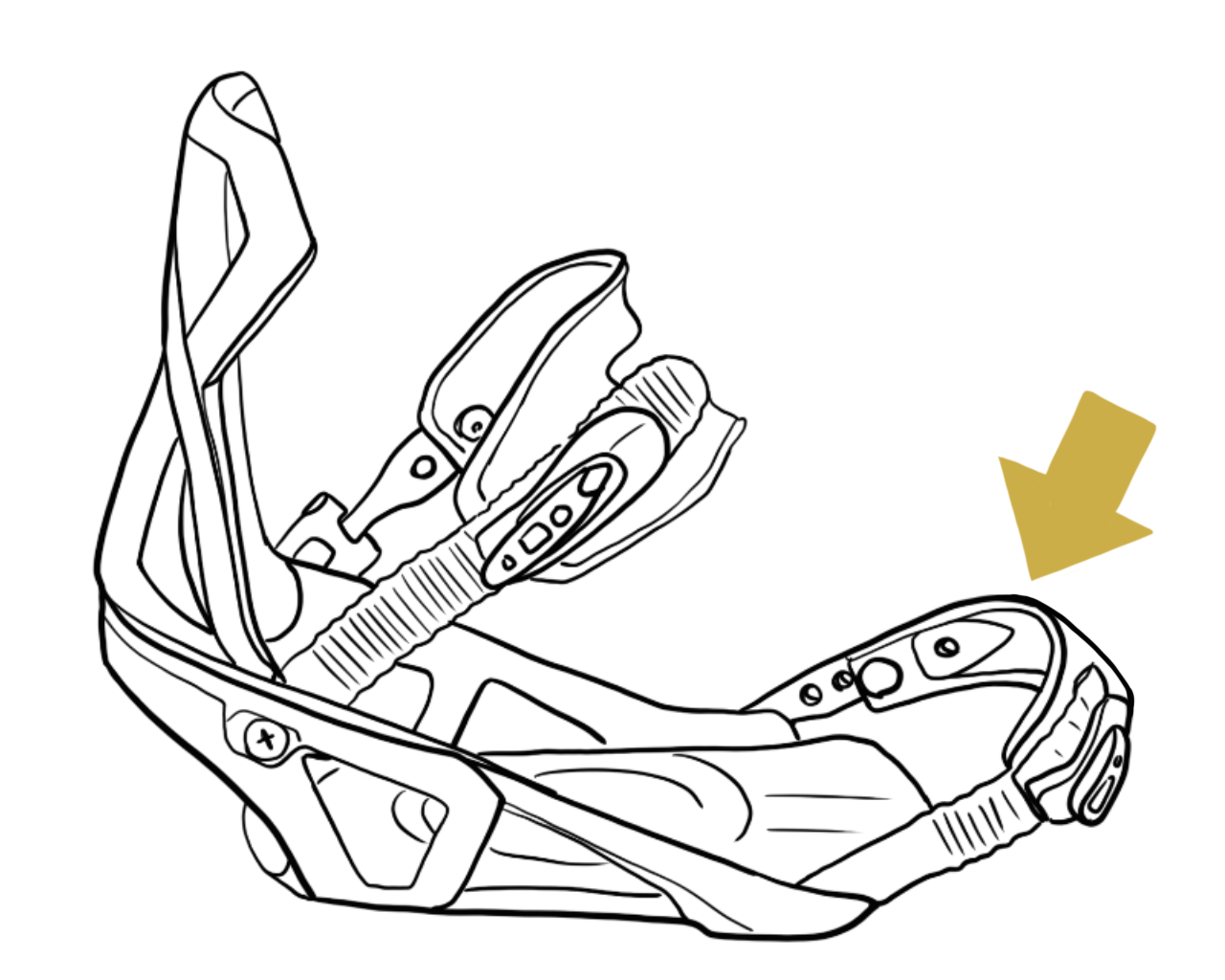
Traditional strap
The traditional toe strap goes above the foot, over the toes.
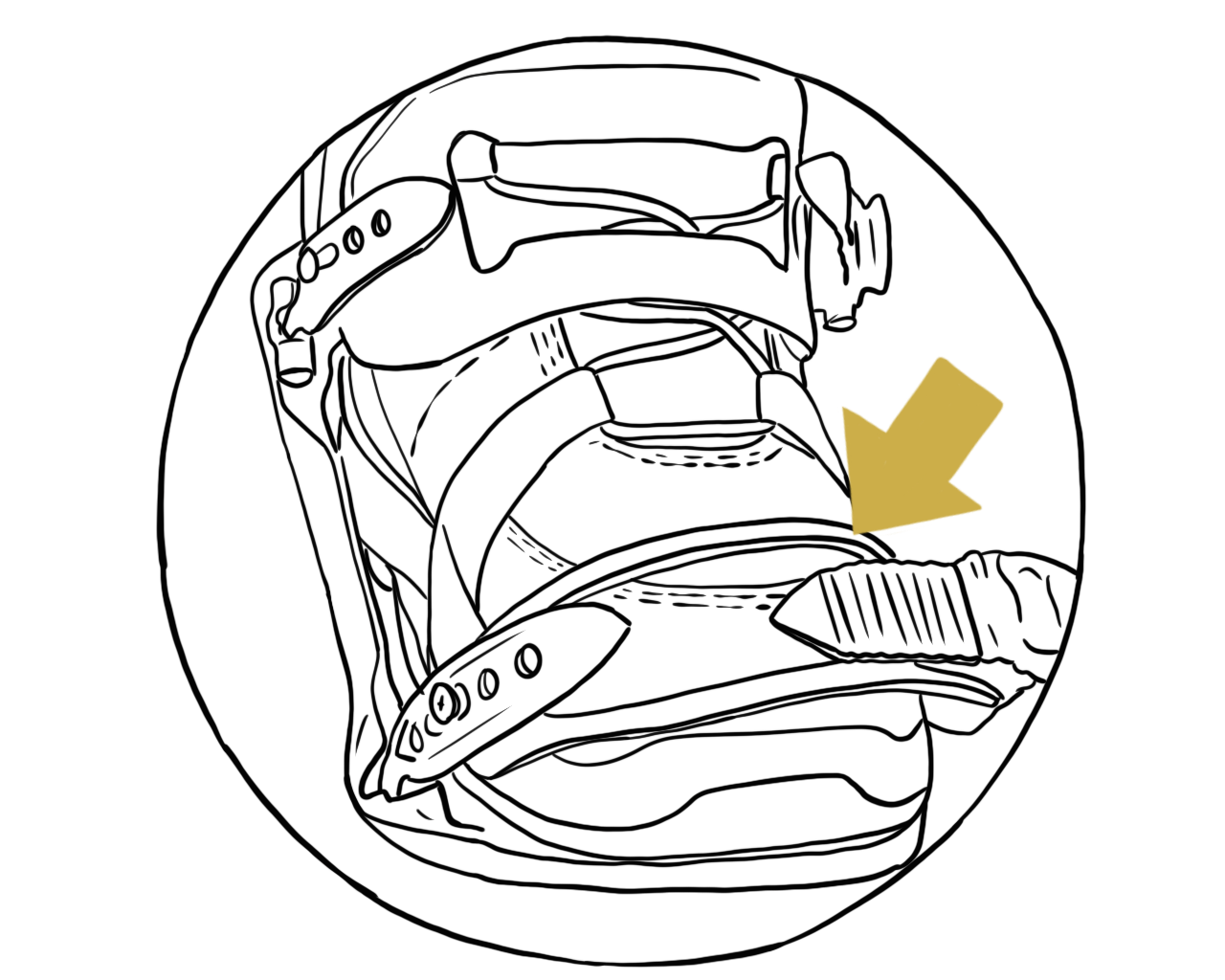
"Cap strap"
The "cap strap" comes over the end of the foot and covers the toes.
SPEED ENTRY SNOWBOARD BINDINGS.
Either with a rear entry or with one wide ankle strap.
The advantage? Speed entry and memory tightening (you adjust it once and for all), very welcome!
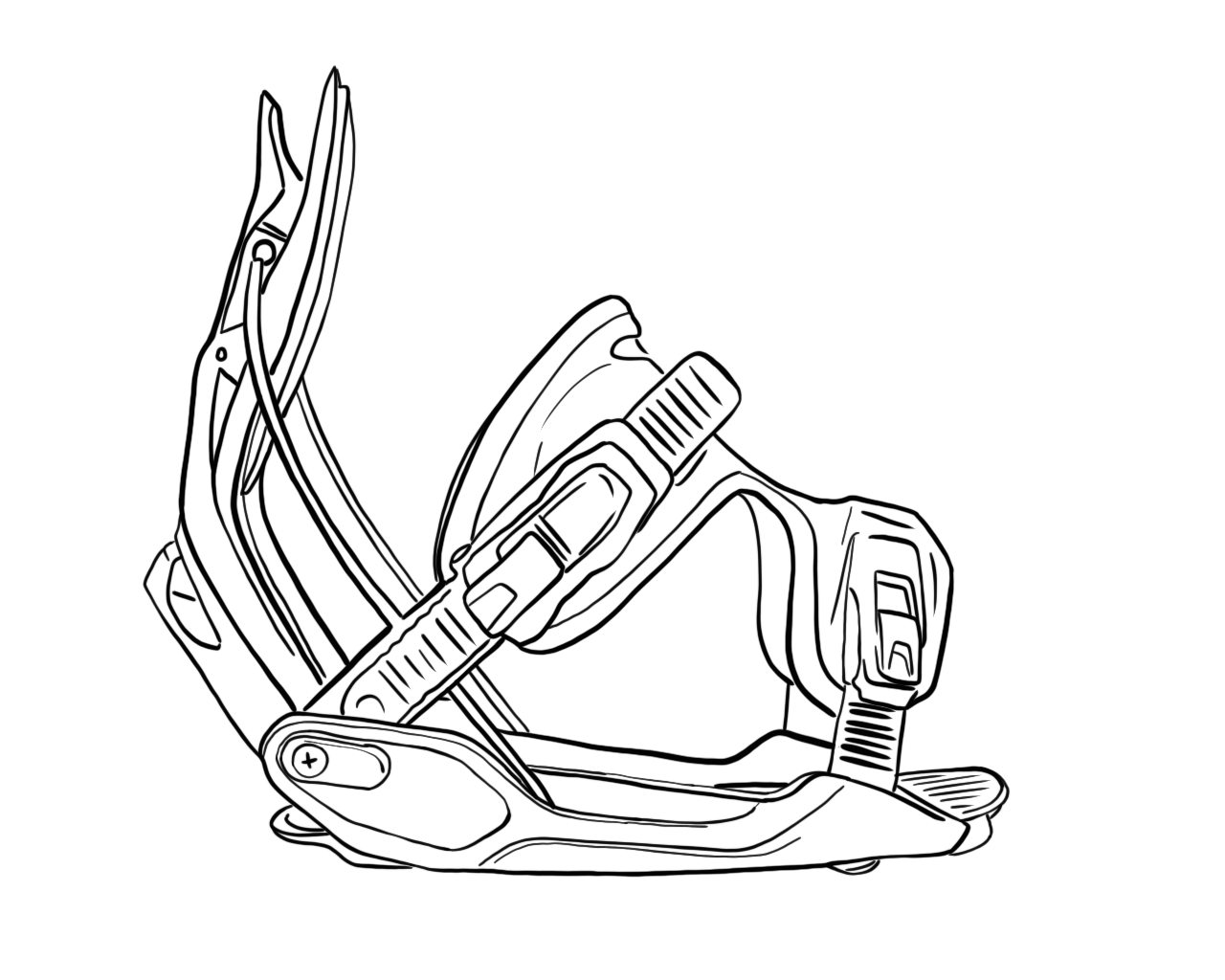
Rear entry
A fairly old model, rear entry snowboard bindings: the highback swings back and you can place your foot in the binding.

No straps
Some brands have recently launched new snowboard bindings with a quick tightening system that doesn't require straps.
The best known is the "Step On" by Burton, but other brands are beginning to offer alternatives such as the K2 and the CLICKER.
SNOWBOARD BINDINGS FOR SPECIFIC STYLES

Hardboot bindings
This type of snowboard binding is specially designed for Alpine snowboarding boots with a very rigid plastic shell, similar to skiing ones (that's where the name comes from "Hardboot bindings"...).
These types of bindings are often made of metal components and don't have straps or highbacks.
They are used with directional snowboards, very rigid and designed only for carving turns on piste.

Splitboard bindings
Splitboard bindings are specially designed for backcountry use. They are generally lighter and more durable than classic snowboard bindings.
The interface connects the bindings to the splitboard and enables the heel and highback to be locked or released to climb all types of slope in the mountains.
Choose the size of your snowboard bindings according to the size of your boots. Each binding has an approximate equivalent.
Snowboard binding sizes are rather generic:
- S = small
- M = medium
- L= large
Good to know: a fixed size S for women will be smaller than a fixed size S for men.
For example L = 7½ - 13: the L sized binding is suitable for boots size 7½ to 13.
To choose the right binding size, we strongly recommend you to try the bindings with your snowboarding boots.
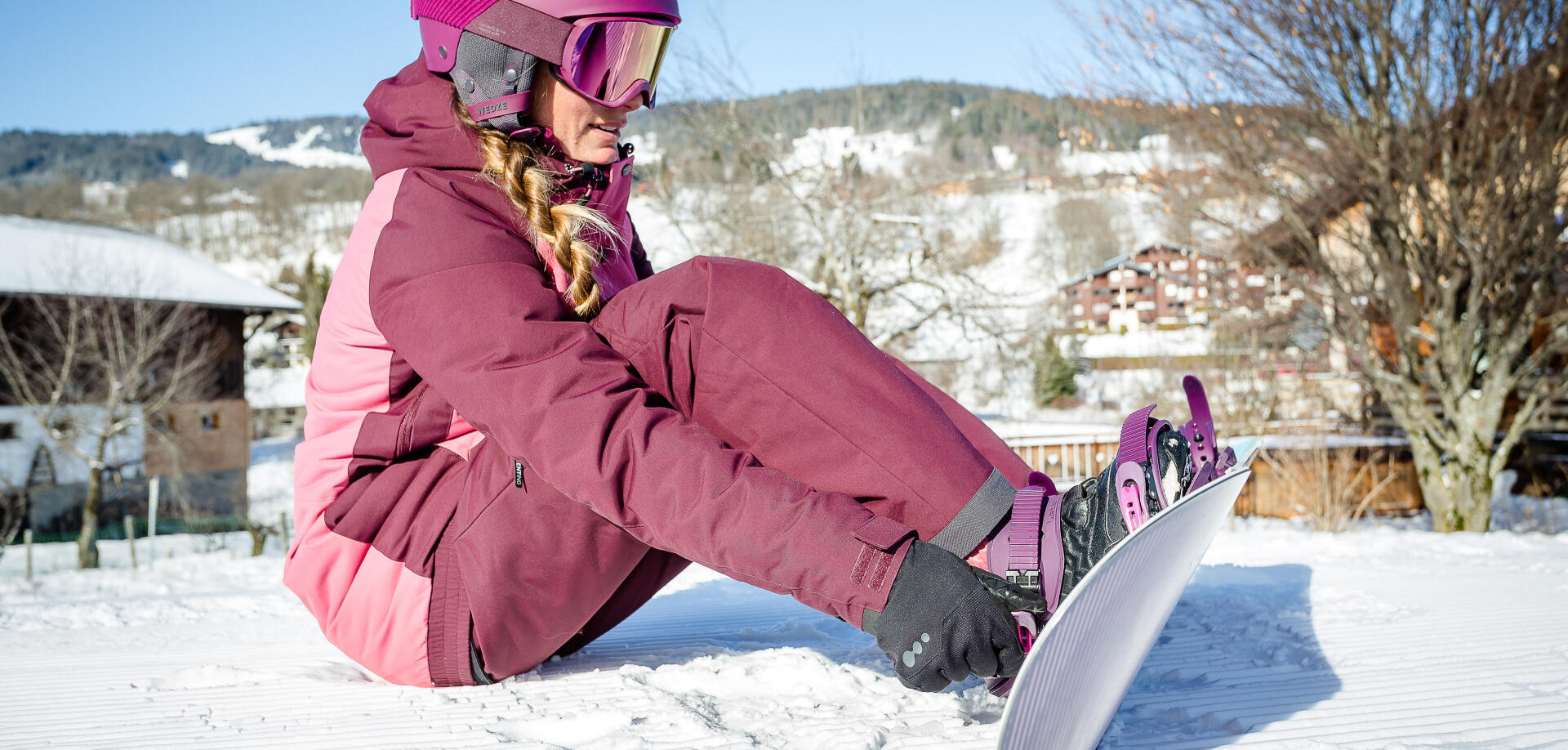
To be well-equipped:
If you loved this item, rate it. If you have questions, post them in comments, we will be delighted to answer.
Have fun choosing your binding and enjoy your ride!

DREAMSCAPE product manager and snowboarder.